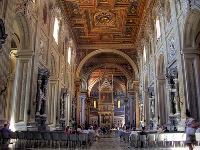
The Basilica of St John Lateran was built in the 4th century by Constantine the Great and was the first church built in Rome. It is the cathedral of the Diocese of Rome, and as such ranks above all other Roman Catholic churches, even St Peter's Basilica in the Vatican. It is the official ecclesiastical seat of the Pope, and it is here that he celebrates Mass on certain religious holidays. The building has suffered much damage in the past and has been rebuilt several times, leaving only fragmented parts of the original church. The present building is characterised by its 18th-century façade and contains several important relics, a 13th-century cloister and an ancient baptistery.Inside are numerous statues, paintings, the High Altar that can only be used by the Pope, and a cedar table that is said to be the one used by Christ at the Last Supper. Across the street is one of the holiest sites in Christendom, visited by pilgrims from around the world: the Palace of the Holy Steps, believed to be the 28 marble steps originally at Pontius Pilate's villa in Jerusalem, that Christ climbed the day he was brought before Pilate. They have been in Rome since 1589.
Address : Piazza S. Giovanni in Laterano
Website : www.turismoroma.it/cosa-fare/basilica-di-san-giovanni-in-laterano?lang=en
Telephone : +39 06 6988 6493
Opening times : Open daily from 7am to 6.30pm
Admission : Basilica is free but €2 for entrance to the Cloister
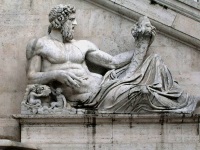
Capitoline Hill was the original capital of Ancient Rome and continues to serve as the seat of the city's government. It is the smallest, but also the most famous, of the Seven Hills of Rome, and once housed the Senate. The main feature of the area is Michelangelo's Piazza del Campidoglio, a testimony to the superiority of Renaissance town planning. The piazza is bordered by three palaces: the Palazzo dei Conservatori and the twin structures of the Palazzo dei Senatori and Palazzo Nuovo, which house the Musei Capitolini, containing the largest collection of Classical statues in the world. Among the notable statues found here are the Dying Gaul and the Satyr, the Capitoline Wolf with Romulus and Remus, and the Spinario. Paths cut along the side of the hill from the Campidoglio allow visitors to enjoy breathtaking panoramic views of the ancient sites of the Forum and Colosseum. Exploring this historic area is a must for anybody interested in ancient Rome and the sense of age and power is thrilling. Although the buildings are not all old the hill gives an amazing sense of what it must have been like during the peak of the Roman Empire. The steps to the top can be a bit daunting but the climb is well worth the effort, and there is access for disabled visitors.
Address : Piazza del Campidoglio, Rome
Website : www.museicapitolini.org
Telephone : +39 06 0608
Opening times : Museums are open Tuesday to Sunday, from 9am to 8pm. Closed 1 January, 1 May, and 25 December.
Admission : €15 (adults) for access to all the museums, with concessions available.
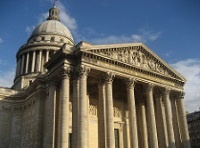
The stately Pantheon is one of the world's most inspiring architectural designs; almost two thousand years after it was built, the Pantheon's dome is still the world's largest unreinforced concrete dome. Built as a temple to the Roman gods by Hadrian in 120 AD, its perfectly proportioned floating dome rests seductively on sturdy marble columns. The only light source is the central oculus, which was used by the Romans to measure time (with the aid of a sundial) and the dates of equinoxes and solstices. The sunlight pouring through the oculus and illuminating the floor in the otherwise dark church is quite a sight. The south transept houses the Carafa Chapel and the tomb of Fra Angelico rests under the left side of the altar. The Pantheon is still an active place of worship and Christian services are conducted regularly. Visitors should show respect and keep their voices down; this is not difficult as the interior inspires awe and humility which is perhaps why the atmosphere is almost always peaceful and quiet despite the crowds of people that visit. Photography is allowed and there are audio guides available for hire. One of the most iconic buildings in the world and certainly among Rome's most famous attractions, the Pantheon is a must-see which seldom leaves visitors unaffected.
Address : Piazza della Rotonda
Website : www.pantheon-rome.com/opening-hours/
Telephone : +39 06 6830 0230
Opening times : Open Monday to Saturday, from 8:30am to 7:30pm; on Sundays from about 9am to 6pm. Closed New Year's Day, 1 May and Christmas Day.
Admission : Free
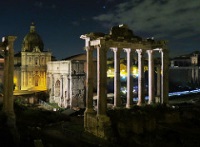
The site of Ancient Rome's commercial, political and religious centre rests in the valley between the Capitoline and Palatine hills. The Forum's main thoroughfare, Via Sacra, slices through the old market square and former civic centre. To make sense of the ruins and relics of the old Republic, it is helpful to consult a map of the area. Some of the best-preserved and most notable monuments include the impressive Arch of Septimus Severus - a construction designed to celebrate Roman victory over the Parthinians - and the former atrium of the House of the Vestal Virgins, and the Temple of Vesta. Also of note are the Temple of Antoninus and Faustina, and the Arch of Titus, built to celebrate Titus' destruction of Jerusalem in 70 AD. To the right of the arch are stairs snaking up the Palatine Hill, through a series of terraces to the Farnese gardens. The scented avenue, festooned with roses and orange trees, gives way to a magnificent vista over the Forum. Negotiating your way through the ruins is thrilling but can be confusing and this attraction is best tackled with a guide or at least a good map. There are some really wonderful guides available and they enrich the experience with information and context.
Address : Via dei Fori Imperiali
Website : www.tribunesandtriumphs.org/roman-life/roman-forum.htm
Telephone : +39 06 0608
Opening times : Open daily from 8.30am until dusk. Closed on New Year's Day, 1 May and Christmas Day
Admission : Free
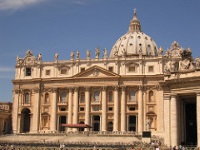
The Basilica lies above the reputed site of St. Peter's tomb. It has an overwhelming interior, containing notable sculptures including Michelangelo's Pieta, which is protected by bullet-proof glass since the damaging attack on it in 1972. In the central aisle stands Arnolfo da Cambio's bronze statue of St Peter, its foot worn down by the constant flow of pilgrims' kisses. Proudly resting above the papal altar is Bernini's Throne of St Peter. The Vatican Grottoes, containing papal tombs, can be reached by steps from the statue of St Longinus. The Necropolis is located one level below the grottoes. This is the legendary site of St Peter's tomb and advance permission has to be obtained to view it. Tours of the Necropolis, called the Scavi Tour, take about 90 minutes and are fascinating but must be booked well in advance. Children under 11 are not permitted on the tour. A strict dress code is in place for St Peter's Basilica and no shorts, bare shoulders or miniskirts are allowed (for men and women). There are frequent religious services at the Basilica which may disrupt visiting times. St Peter's Basilica is one of the most famous religious attractions in the world and even from a secular perspective is breathtakingly impressive, with enough art and history on offer to impress even the most experienced of travellers.
Address : Piazza San Pietro
Website : www.stpetersbasilica.info/contacts.htm
Telephone : +39 06 6988 5435
Opening times : Open daily from 7am to 7pm (April to September), and 7am to 6pm (October to March).
Admission : Entry to the Basilica is Free. Entry to the Dome carries a charge.
Known to be one of the most impressive buildings of the Roman Empire, the Colosseum was the largest structure of its era. Emperor Vespasian, founder of the Flavian Dynasty, started construction of the Colosseum in 72 AD and it was completed in 80 AD. This enduring symbol of ancient Rome, which used to be called the Flavian Amphitheater, tenaciously clings to its foundations as the site of former gladiatorial conquests and brutal public entertainment. Its architecture boasts an impressive array of Doric, Ionic and Corinthian columns and an underground network of cells, corridors, ramps and elevators that were used to transport animals from their cages to the arena. It could once hold a crowd of 55,000 spectators and had 80 entrances. Emperors staged days of free public entertainment in this vast building, and not all the games were brutal and blood-thirsty - they often began with comedic acts and exotic animal displays, but did invariably include gladiatorial fights to the death. The magnificence of the original structure has been eroded through the years by pillaging and earthquakes so that only a skeletal framework remains; however, the sense of history the Colosseum is still able to evoke is truly awe-inspiring and it remains one of Rome's knock-out attractions, featuring on the bucket lists of many a traveller.
Address : Piazza del Colosseo
Website : www.the-colosseum.net/around/visit.htm
Telephone : +39 06 700 4261
Opening times : Open daily from about 9am to 6:15pm in summer, and from 9am to 4:30pm in winter. Times vary depending on sunrise and sunset.
Admission : €12 (adults); €7 (reduced fee)
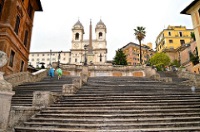
The graceful Spanish Steps, built in 1725, elegantly curve their way from the Piazza di Spagna to the Church of Santa Trinit dei Monti, a pastel-tinted neoclassical building. The shopper's paradise of Via Condotti leads back from the Spanish steps to Via del Corso, and during spring the steps are decorated with pink azaleas. At the foot of the steps lies Bernini's boat-shaped Barcaccia Fountain, and to the right is the unassuming Keats-Shelley Memorial House. For lovers of the Romantic poets the steps have become a sort of pilgrimage site as a result of the Memorial House. The steps and piazza can get really crowded but the bustle is actually part of the attraction in this case: the Spanish Steps are perfect for settling down to some people-watching and soaking up the atmosphere of the city. The steps are iconic and if you do walking tours of Rome you are almost guaranteed a stop here. Lots of artists and musicians perform in the area which gives it a festive feel, but beware of tourist scams, like men approaching pretty women to give them flowers and then demanding payment. If you want to take photographs it's best to arrive early in the morning before the crowds do.
Address : Piazza di Spagna
Website : www.italyguides.it/en/lazio/rome/squares-and-fountains/spanish-steps
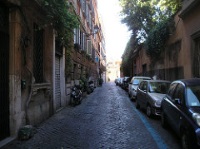
Separated from central Rome by the Tiber River, Trastevere is a picturesque medieval neighbourhood characterised by a quirky Bohemian atmosphere. Its narrow cobblestone streets are lined with overhanging flower boxes and washing lines and are home to numerous cafes, boutiques, pubs and restaurants. The area has long attracted artists, famous people and expats, and is a charming place to explore, having escaped the grand developments of central Rome. Trastevere looks like most foreigners expect an Italian village to look, which is partly why tourists find it so enchanting; the photographic opportunities are endless! There are some glorious old churches in the area, perhaps the most lovely of which is the Basilica of Santa Maria, which has wonderful mosaics and draws many visitors into the area for the first time. The best way to explore is just to wander aimlessly and see where your feet take you. It is quite different at night time, when it seems more elegant, and it is worth visiting more than once. As a result of the areas popularity and bohemian atmosphere beggars and scam artists can be a problem and travellers should be wary of unwanted attention.
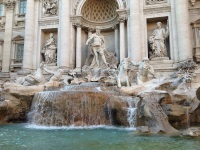
The tiny Piazza di Trevi has been immortalised through this fountain, built for Pope Clement XII. Arguably the most famous and most beautiful fountain in all of Rome, and the largest Baroque fountain in the city, the statues adorning this watery display represent Abundance, Agrippa, Salubrity, the Virgin and Neptune guided by two Tritons. The fountain marks the terminal point of an ancient aqueduct that supplied Rome for more than four hundred years. The story of the discovery of the spring of fresh water channelled into this aqueduct is represented on the fountain's facade. Tossing a coin into the fountain (over your shoulder, with your back turned to the water) is supposed to guarantee a return trip to Rome. This well-known myth has ensured that thousands of euros are thrown into the fountain every day by tourists desperate for a chance to return; the money is used for charitable projects so visitors are at least supporting a good cause, although often unknowingly. There are regular attempts to steal money out of the fountain as well! The Trevi Fountain has been immortalised in many films and has become a top attraction in Rome. The best time to visit is at night when it is stunningly lit up.
Address : Piazza di Trevi
Website : www.trevifountain.net/
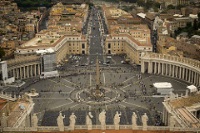
The Vatican City is a remarkable entity in that it is an independent state administered by the Roman Catholic Church, and one of the world's richest countries. The population of this enclave doubles during the working week as residents from Rome cross into the Vatican City to work within its boundaries. Scandal and intrigue has somewhat tarnished the papacy's image over the years, but this does not detract from the magnificence of the art collections housed within its buildings, or the passion the city inspires in the many pilgrims who flock to its holy sites. Pope Francis has brought the Vatican back into the limelight in many positive ways. The must-see attractions when on holiday in the Vatican City include St Peter's Basilica, the Vatican Museums, and the Sistine Chapel.The Sistine Chapel, one of Italy's most popular attractions, is known for the famous ceiling, painted by Michelangelo, which looms above the frescoes on the side walls, painted by an illustrious team of artists that included Botticelli, Ghirlandaio, Roselli, Pinturicchio, Signorelli and della Gatta. The altar wall is covered by Michelangelo's Last Judgement, revealing the figure of Christ hovering above centre and flanked by Mary and other saintly figures. The chapel is justified in its fame and leaves travellers breathless; it is a profoundly special place to visit.The Vatican Museums provide access to one of the world's greatest collections of art. The galleries stretch over four miles (6km), and include the magnificent Raphael Rooms, the Etruscan Museum, and the Pio-Clementino Museum, which boasts the world's largest collection of Classical statues.
Address : Viale Vaticano
Website : www.vatican.va
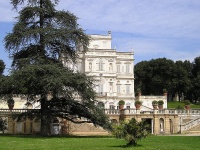
Rome is a busy, crowded city and it can be difficult to find some peace and quiet, or open spaces for exercise. The best place to go to get some fresh air and a break from traditional sightseeing is the Villa Doria Pamphili, which is the largest landscaped public park in Rome and a wonderful place to spend a few hours. The park is huge with streams, a lake, lots of shaded areas and plenty of open grassy spaces; perfect for an early morning jog or stroll. The park is also ideal if you are travelling to Rome with kids because it provides a lovely natural outdoor area for family picnics and games, allowing children to blow off some steam. There are playgrounds, a skating rink and soccer fields to enjoy, and pony rides around the Villa Doria Pamphili are also great fun. There is a little restaurant for refreshments as well. The 17th-century villa, which gives the park its name, and features landscaped gardens, is not usually accessible to tourists but is interesting to see from the outside. The park is actually lovely all year, even in winter, though it is obviously at its best in good weather. Playgrounds and parks are hard to find in Rome which automatically makes Villa Doria Pamphili a big hit with families visiting the city.
Address : Via San Pancrazio
Website : www.villapamphili.it/

Travel Guide powered by Word Travels, copyright © 2023 Globe Media Ltd. By its very nature information in this travel guide is subject to change at short notice and travellers are urged to verify information on which they're relying with the relevant authorities. Neither Globe Media Ltd nor Travel Vogue can accept any responsibility for any loss or inconvenience to any person as a result of information contained above.